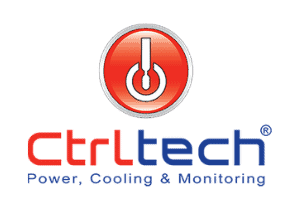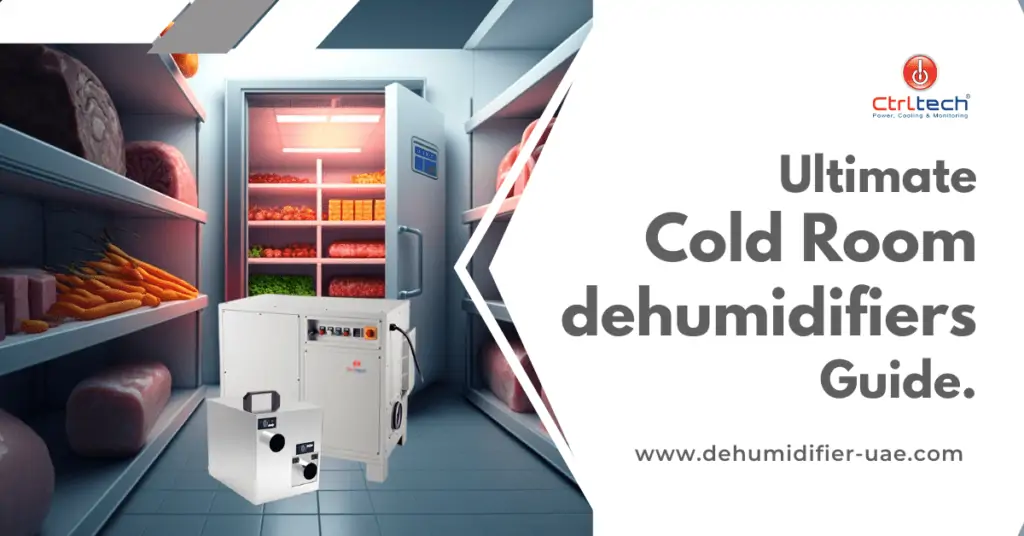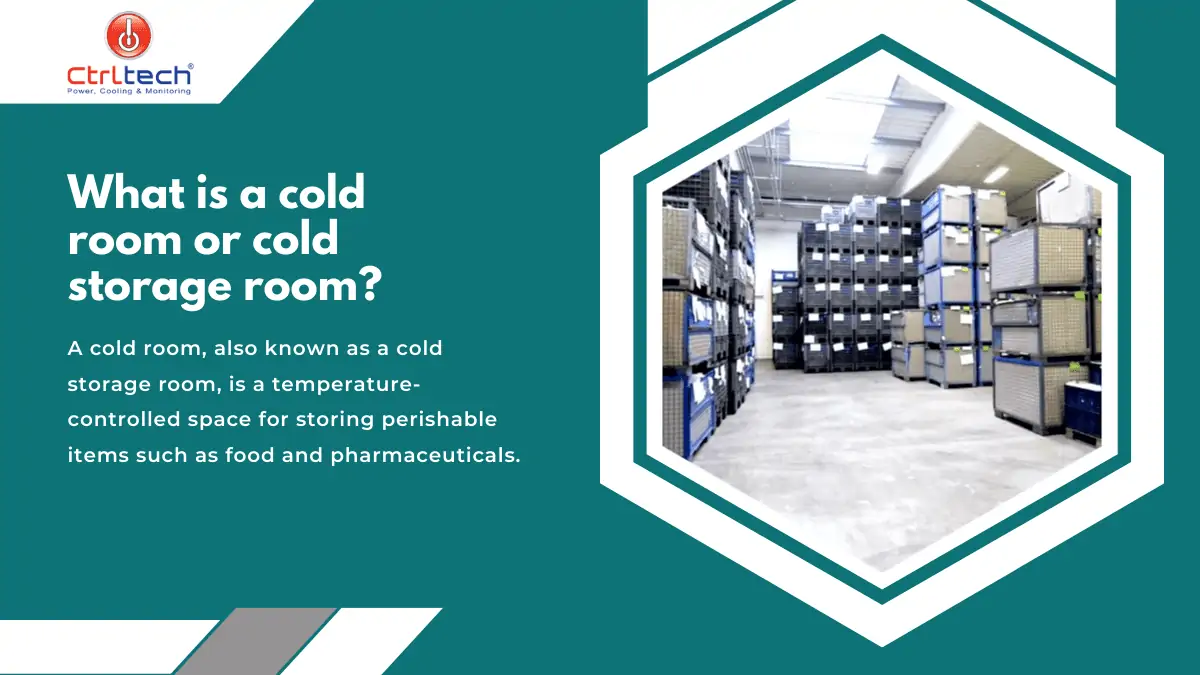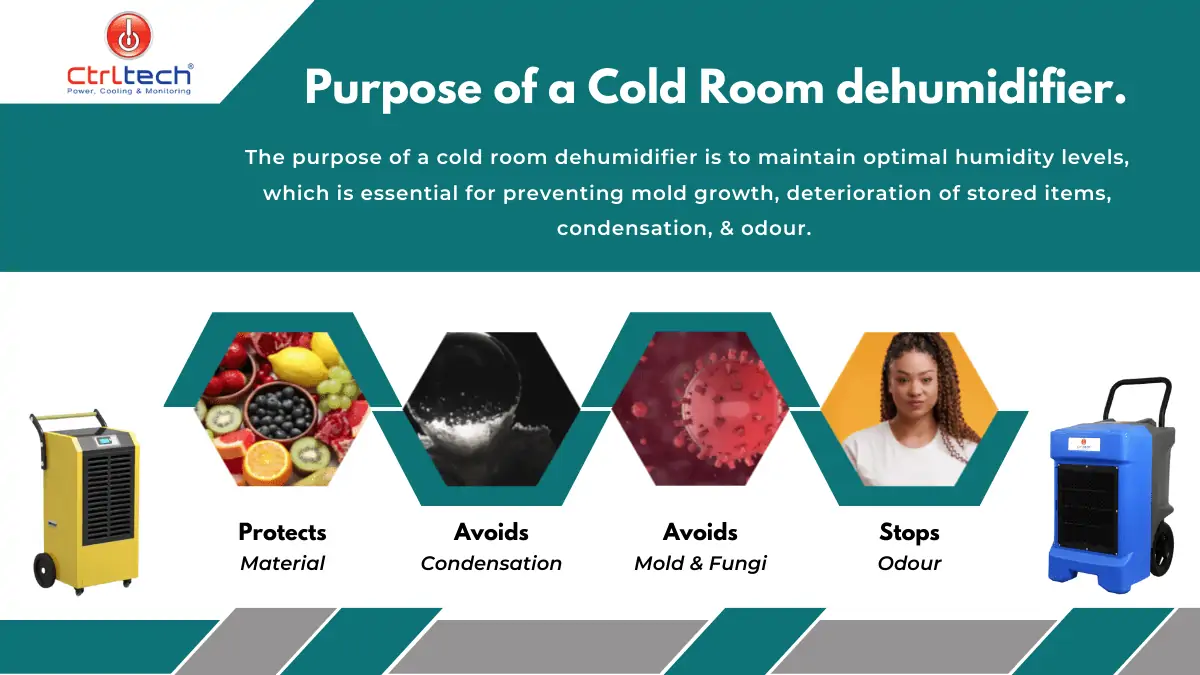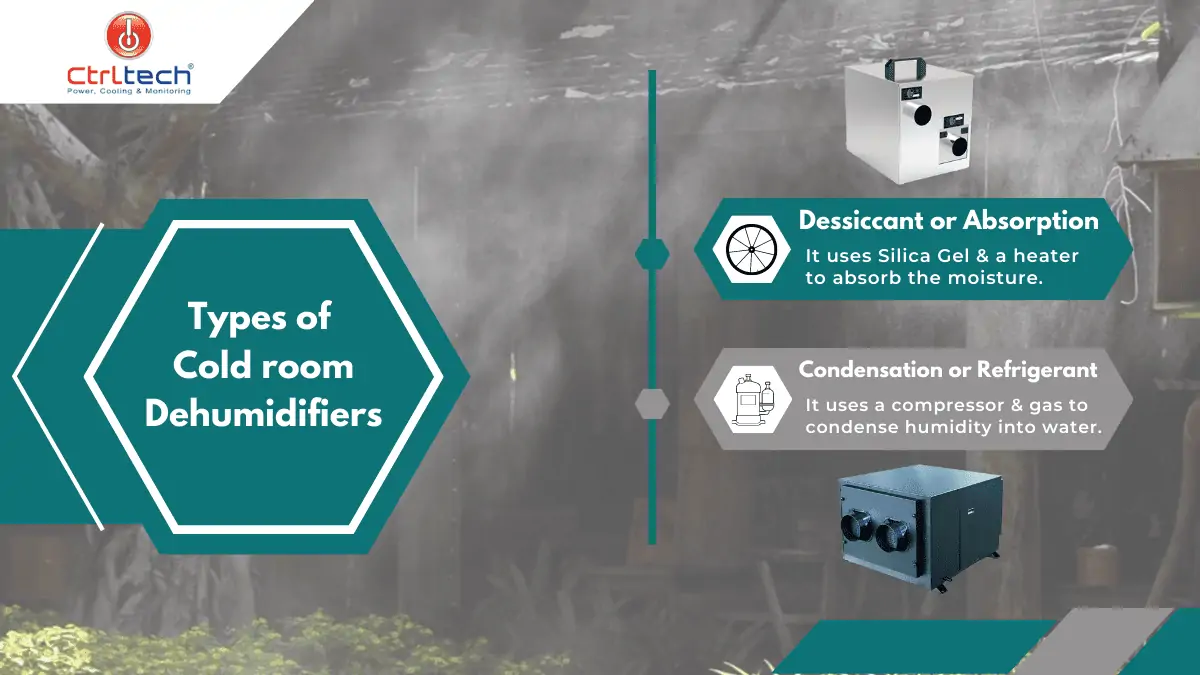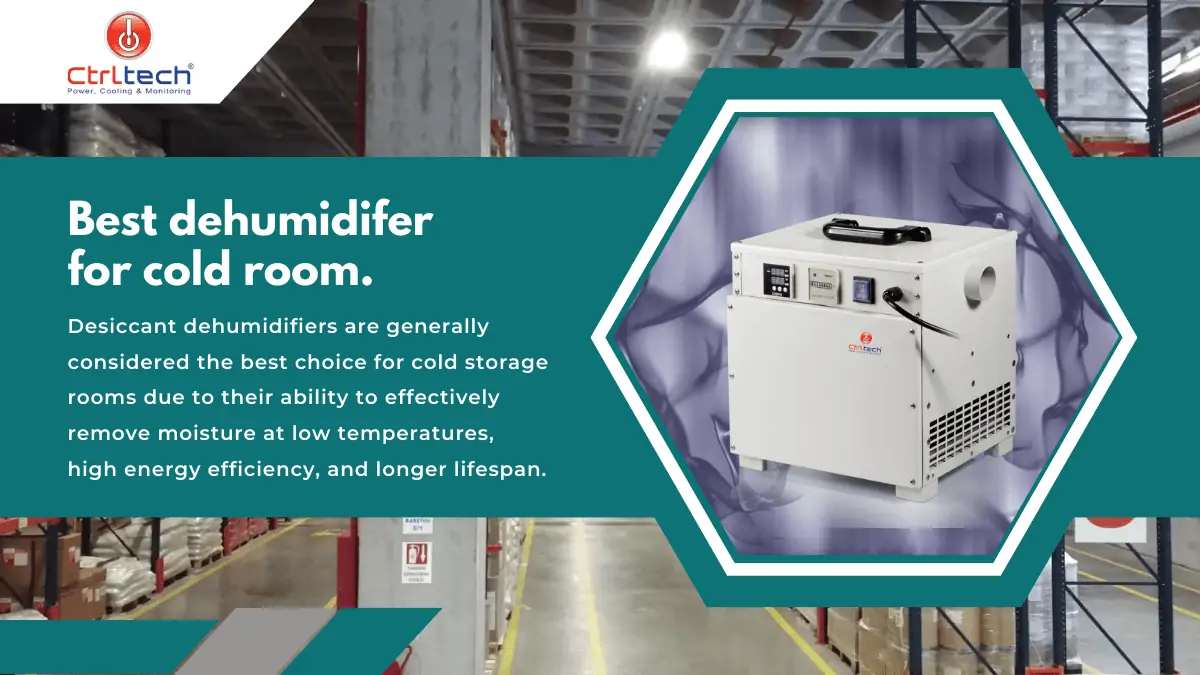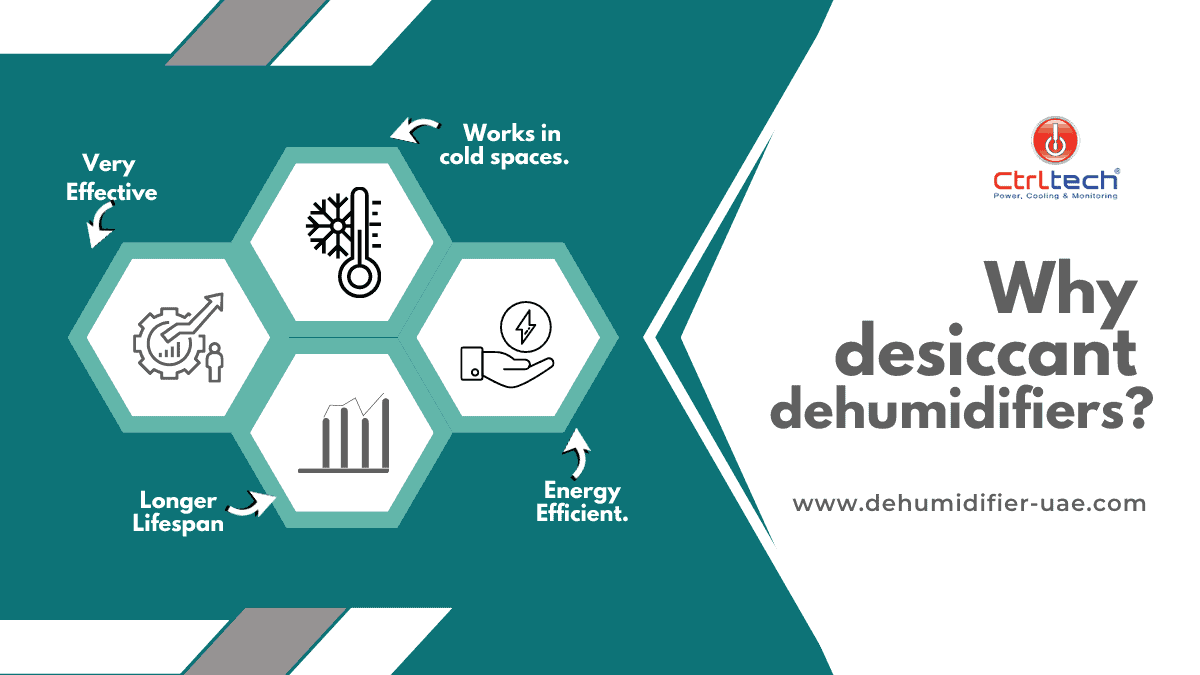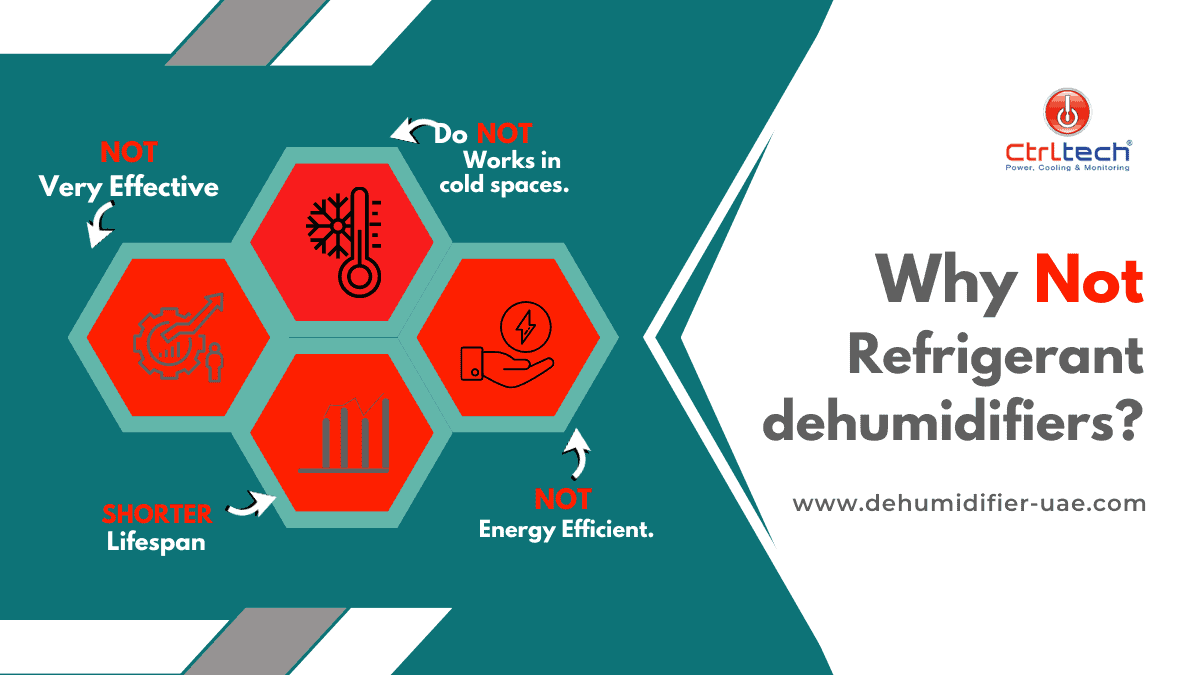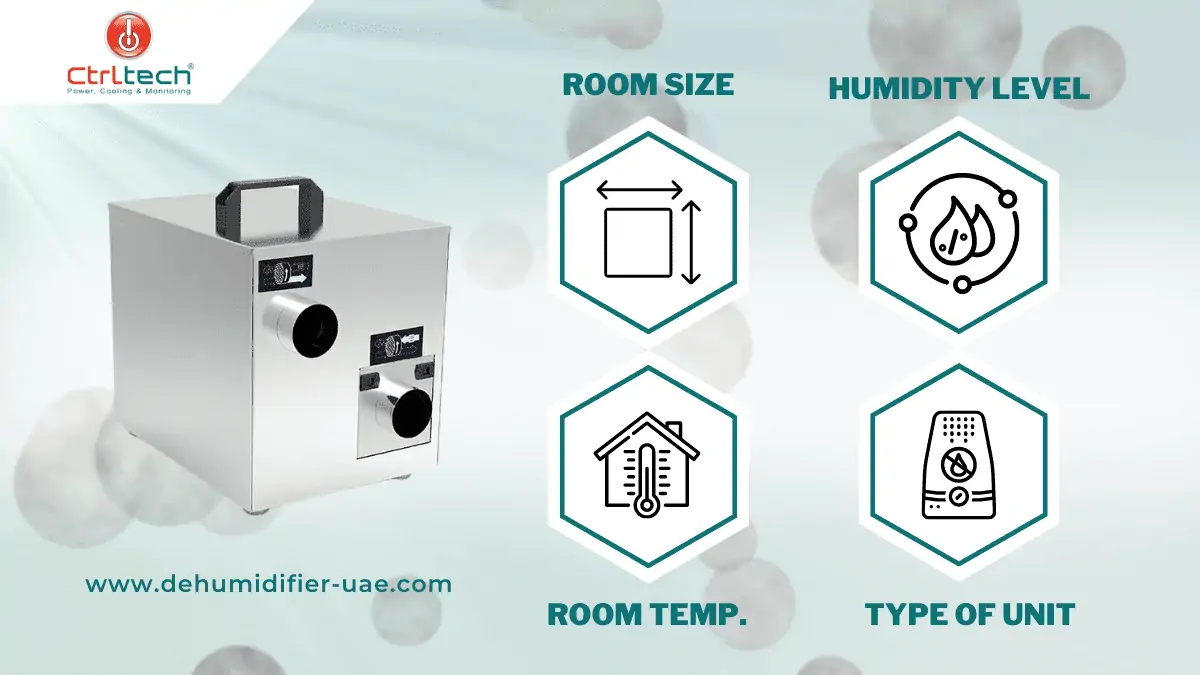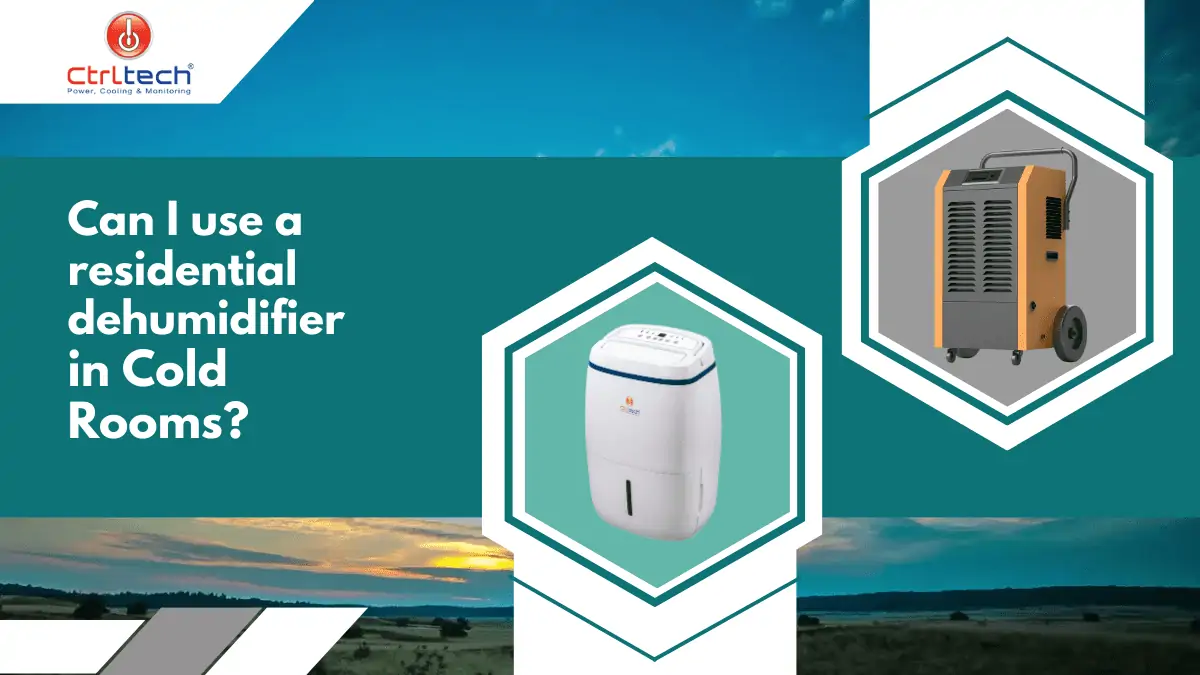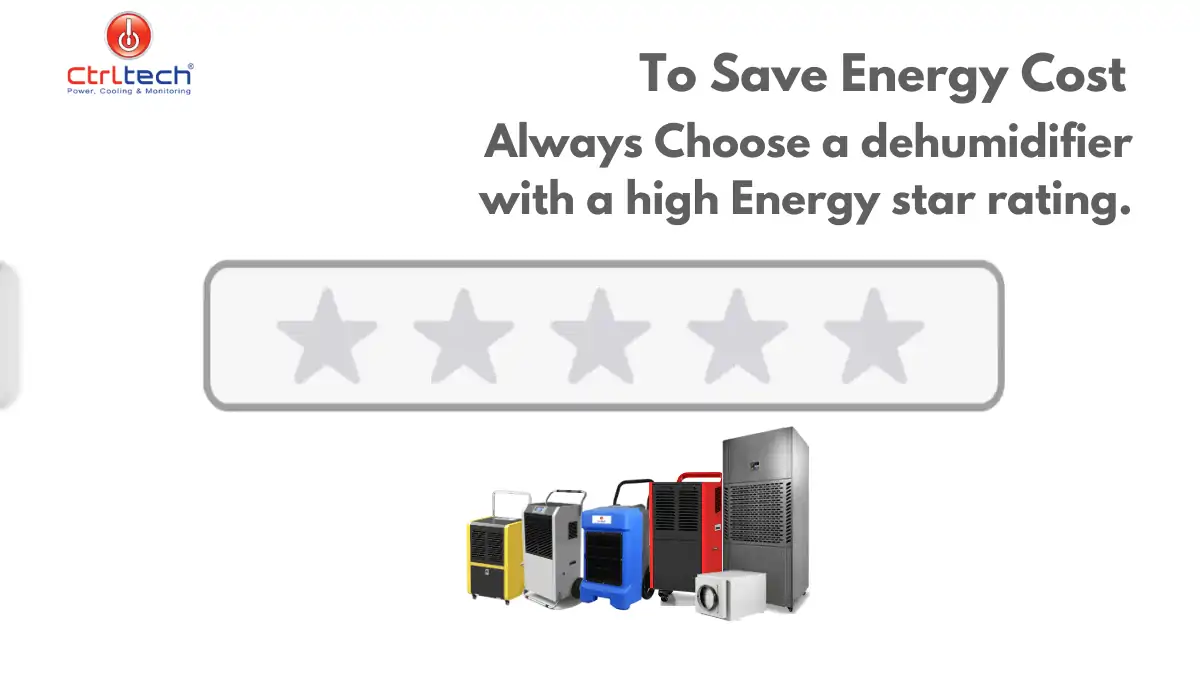dehumidifiers
The Ultimate Cold Room Dehumidifier Guide.
When it comes to storing food & other products in a controlled environment, cold rooms are one of the best solutions. A cold room is a temperature-controlled space designed to provide a climate with a consistent temperature and humidity level. Hence, we need a cold room dehumidifier along with an air conditioner. Such an environment is ideal for storing products that require a specific temperature and humidity level to remain in optimal condition. For example, fresh fruits, vegetables, and other perishables must be stored in a cold room. And it should be equipped with a cold storage dehumidifier.
However, maintaining cold room storage can be challenging without the right equipment. That is why it is essential to use a cold storage dehumidifier when storing items in a cold room. A dehumidification system is a device that removes excess moisture from the air. Cold temperature dehumidifier helps to maintain the desired humidity level in a cold room, which is essential for optimal storage conditions.
Table of contents
- Why You Need a Cold Room Dehumidifier? Understanding the Necessity.
- Cold Room Dehumidifier Benefits: Why They’re Essential for Optimal Storage.
- Dehumidifiers for Cold Storage Rooms: Comparing Desiccant vs. Refrigerant Models.
- Benefits of Using a Desiccant Dehumidifier in Cold Storage Facilities.
- How to choose the right Dehumidifier for Cold Room Storage?
- Desiccant Dehumidifier maintenance.
- Tips for Ensuring Optimum Performance of a cold room Dehumidifier.
- FAQs
- Conclusion.
Why You Need a Cold Room Dehumidifier? Understanding the Necessity.
A cold room dehumidification system is essential for storage because it can help control and maintain the proper humidity levels. By reducing the amount of water in the air, a cold room dehumidifier can help prevent mold, mildew, and other types of microbial growth, which can cause spoilage and contamination of stored food products.
Additionally, a dehumidifier can help to reduce condensation on the walls and floors of a cold room, which can lead to slippery surfaces and the growth of bacteria and fungi. Lastly, a dehumidifier can help reduce energy usage in the cold room, as it maintains the desired humidity levels without cooling the room to a shallow temperature.
Cold Room Dehumidifier Benefits: Why They’re Essential for Optimal Storage.
Controls Humidity Levels: One of the most important benefits of using a dehumidifier for cold room storage is that it helps to maintain the desired humidity level. Too high a humidity level can lead to condensation and make a favorable climate for mold development. A cold storage dehumidification system ensures that the humidity level stays at the desired level, which is essential for optimal storage conditions.
Prevents Mold: As mentioned before, when the moisture level is too high, it can cause condensation, and it can give rise to mold growth. It can be dangerous for the stored products and people using the cold room. A cold room dehumidifier helps to prevent mold growth by cry climate by removing excess moisture from the air.
Prolongs Product Freshness: The last benefit of using a dehumidifier for cold storage rooms is that it helps prolong the products’ freshness. The products will stay fresher for longer by maintaining the desired humidity level. It is especially important for fruits and vegetables, which can quickly spoil if the humidity level is too high.
Using a dehumidifier for a walking freezer is essential for maintaining optimal conditions. By controlling the humidity level, a dehumidifier can help to prevent mold growth and prolong the freshness of the products. This makes it essential equipment for any commercial or industrial cold room storage.
Dehumidifiers for Cold Storage Rooms: Comparing Desiccant vs. Refrigerant Models.
Cold storage facilities, such as warehouses and distribution centers, rely on dehumidifiers to maintain optimal humidity levels and prevent moisture damage to stored goods. When selecting a cold room dehumidifier, there are two main types: desiccant and refrigerant. In this post section, we’ll compare these two types and discuss their pros and cons for use in cold storage environments.
Overview of refrigerant & desiccant dehumidifiers.
Desiccant dehumidifiers use a specialized material, Silica Gel desiccant, as per its inherited property, to absorb moisture from the air. This unit effectively removes moisture in low-temperature environments and is often used in industrial and commercial settings. It is also known as a silica gel dehumidifier.
On the other hand, refrigerant dehumidifiers use a refrigerant to cool the air, causing moisture to condense and be collected. This type of dehumidifier is more commonly used in residential settings and is generally less expensive than desiccant models.
Which is a more efficient dehumidifier to remove humidity in cold rooms?
Now, let’s compare the efficiency and effectiveness of these two types of dehumidifiers in cold storage environments. Desiccant dehumidifiers are known for removing moisture at low temperatures and are often the preferred choice for use in cold storage facilities. They are also more energy efficient and have a longer lifespan than refrigerant models. However, they do tend to be more expensive upfront and may require more maintenance.
On the other hand, refrigerant dryers are less effective at removing moisture in low-temperature environments and may need help maintaining optimal humidity levels in a cold storage facility. They are also less energy efficient and have a shorter lifespan compared to absorption models. However, they are generally more affordable upfront and require less maintenance.
Best dehumidifier for cold storage room.
In conclusion, desiccant and refrigerant dehumidifiers have unique advantages and disadvantages for use in cold storage rooms. It’s crucial to weigh the pros and cons and consider your specific needs when selecting the best dehumidifier for your facility.
Desiccant types units are the best dehumidifier for cold rooms. It is better suited for cold storage rooms than refrigerant models because it can remove moisture at lower temperatures. They are also quieter and have lower running costs. On the other hand, refrigerant dehumidifiers are more efficient at higher temperatures and can be used in a broader range of environmental conditions. They are also easier to install and maintain.
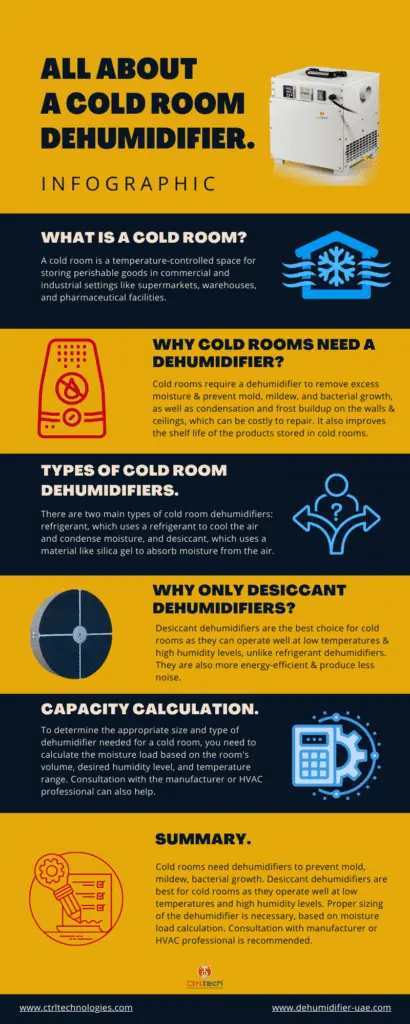
Benefits of Using a Desiccant Dehumidifier in Cold Storage Facilities.
- Low energy consumption: Desiccant cold-temperature dehumidifiers use significantly less energy than compressor-based units. Thus, it is making them more cost-effective.
- Low noise: Desiccant cold room dehumidifiers produce much less noise than compressor-based dehumidifiers. Hence, it is making them ideal for noise-sensitive environments.
- No need for condensate pumps: Silica gel units do not need condensate pumps, eliminating the need for additional equipment.
- Low maintenance: Desiccant systems require little to no maintenance, meaning they can run continuously without any need for service.
- Ability to handle a wide range of temperatures: Desiccant dehumidification systems can handle a wide range of temperatures, making them ideal for use in cold rooms.
How to choose the right Dehumidifier for Cold Room Storage?
When choosing a dehumidifier in a cold storage room, you must consider your specific needs and budget. A refrigerant system may be a suitable option if you are looking for a more affordable upfront cost and minimal maintenance. So, if you prioritize efficiency and long-term cost savings, a desiccant dehumidifier may be the better choice. Please note the following point while selecting a cold storage dehumidifier.
- Calculate the size & temperature of the room: To select the right dehumidifier for your cold room storage, you need to calculate the room size first. Along with it, we need to note room temperature also. It will help you to determine the correct size of the unit.
- Know the ideal humidity level: Knowing the perfect temperature & humidity for your cold room storage is essential. The required moisture level depends on the type of material you are storing inside that cold storage. It will help you choose the right dehumidifier for the job.
- Choose the right dehumidifier type: Different types of dehumidifiers are available, each with its own benefits and drawbacks. Please take into account the factors such as the size of the room, the ideal humidity level, and your budget when selecting the right dehumidifier for your needs.
- Consider the features: Some units come with additional features such as a timer, humidistat, and automatic shut-off, which can be very useful in cold storage rooms.
- Check the energy efficiency rating: Choosing an energy-efficient dehumidifier is vital to save on energy costs. Check the energy efficiency rating of the dehumidifier before purchasing it.
Desiccant Dehumidifier maintenance.
- Check the condition of the desiccant system regularly. Inspect the internal parts for any signs of damage or wear and tear. Clean any dust or debris from the filters, coils, and other internal components.
- Ensure the desiccant dehumidifier is in the correct temperature range for efficient operation.
- Check the performance of the cold room dehumidifier by monitoring the storage area’s relative humidity (RH). The ideal RH level should be between as suggested.
- Inspect the cold temperature dyer for any signs of leaks or blockages. Clean out debris or blockages in the air intake and exhaust vents, ensuring that the dehumidifier operates efficiently.
- Check the electrical connections of the dehumidifier. Make sure all the components are not loose and free from corrosion.
Tips for Ensuring Optimum Performance of a cold room Dehumidifier.
- Ensure the cold storage dehumidifier is the correct size for the cold room.
- Ensure that it is in a well-ventilated area.
- Position the dehumidification system away from direct sunlight.
- Make sure it has access to a power source.
- Check the filter regularly to make sure it is clean.
- Set the dehumidifier to the correct humidity level as per the requirement of the storing items.
- Make sure the room temperature is not too cold, as this can reduce the effectiveness of the dehumidifier.
- Check the condensate tank regularly to ensure it is not overflowing.
FAQs
A cold room, also known as a cold storage room, is a temperature-controlled space for storing perishable items such as food and pharmaceuticals. Cold rooms are typically kept at a temperature between 0°C and 10°C and may be equipped with refrigeration units, shelving, or other storage solutions. Dehumidifiers may be used in cold rooms to maintain optimal humidity levels and prevent the growth of mold and mildew.
The purpose of a cold room dehumidifier is to maintain optimal humidity levels, which is essential for preventing moisture damage to stored goods. Excess humidity can lead to condensation, which can cause mold growth and deterioration of stored items. A dehumidifier removes the excess water content from the air to keep humidity levels within a safe range. It helps to protect stored goods and ensure a dry and stable environment in a cold storage facility.
Two main dehumidifiers for cold storage rooms are absorption or desiccant and condensation or refrigerant. Absorption systems use a specialized material to absorb moisture from the air, while condensation dehumidifiers use a refrigerant to cool the air and cause water to condense.
Desiccant dehumidifiers are generally considered the best choice for cold storage rooms due to their ability to effectively remove moisture at low temperatures and maintain optimal humidity levels. They are also more energy efficient and have a longer lifespan than refrigerant models. However, it is crucial to consider your specific needs and budget when selecting a dehumidifier for a cold storage room, as desiccant models may have a higher upfront cost and maintenance cost.
Desiccant dehumidifiers are known for their ability to remove moisture at low temperatures. In addition, it is generally more energy efficient and has a longer lifespan than refrigerant models. They are also more effective at maintaining optimal humidity levels in a cold storage facility.
Refrigerant dehumidifiers for cold rooms are less effective at removing moisture in low-temperature environments and may need help to maintain optimal humidity levels in a cold storage facility. They are also less energy efficient and have a shorter lifespan compared to desiccant models.
When selecting a cold room dehumidifier, consider the room size, desired humidity levels, and the type of dehumidifier that best meets your needs. Desiccant units may be more energy efficient and effective in cold environments, but mechanical dehumidifiers may be more suitable for larger spaces. Please note price and maintenance requirements are equally important. To find a dehumidifier that is both reliable and meets your specific needs and budget, consider researching different brands and reading customer reviews.
It is generally not recommended to use a residential dehumidifier in a commercial cold storage facility due to the unique demands and requirements of these environments. Commercial cold storage facilities often have larger spaces and higher humidity levels, requiring a more robust and efficient dehumidifier. Residential dehumidifiers are generally not designed to handle the demands of a commercial cold storage facility and may need help to maintain optimal humidity levels effectively. It is usually recommended to use a commercial-grade dehumidifier specifically designed for use in cold storage environments.
Considering energy efficiency when selecting a dehumidifier for a cold storage room is essential, as these units can run continuously and contribute to energy costs. Energy efficiency ratings for dehumidifiers can vary depending on the specific model and brand. Look for dehumidifiers with a high energy star rating, which indicates that they meet strict energy efficiency guidelines set by the local government authorities. This can help to reduce energy costs and lower your carbon footprint in a cold storage facility.
Conclusion.
Cold room dehumidifiers are vital equipment for any cold storage facility. They prevent losses and increase productivity. Desiccant dehumidification systems are the most effective for cold rooms. It is crucial to select the correct capacity unit for optimal results. When choosing a unit, it is advisable to choose a reputable brand.
Estimated reading time: 16 minutes
